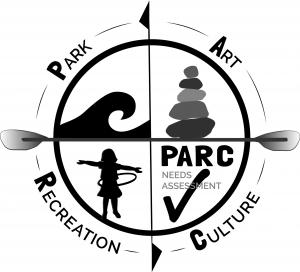-
About Homer
-
- Americans with Disabilities Act Compliance Program City CampgroundsCommunity Recreation COVID-19 Hickerson Memorial Cemetery
- Library Parks & Trails Fee Schedule Public Safety Fire Police Emergency Information
- Events & Activities City Calendar Library Calendar Recreation Calendar Doing Business in Homer Sister City Program Coast Guard City
-
- Departments
- Government
- How Do I?
Park, Art, Recreation and Culture Needs Assessment PARC
Welcome to the Homer Park, Art, Recreation and Culture Needs Assessment!
This project was completed in 2015, but the assessment continues to guide Homer's planning and programs.
PARC = Parks, Art, Recreation + Culture Needs Assessment
Homer + Anchor Point + Kachemak City + Diamond Ridge + East End
Project Goal: To determine the resources and prioritize the needs for our community concerning parks, arts, recreation and culture facilities and programs. (10-15 year outlook)
For a long time, the Homer area has had a rich offering of parks, arts, recreation and cultural amenities. Community parks, indoor and outdoor sports, visual and performing arts, cultural events and festivals are all part of life in Homer. This is part of what makes the area what it is, attracts new friends and family to live here, and keeps us healthy and engaged in community life.
The City and a number of community organizations have overcommitted or inadequate physical facilities, face tight budgets and other limitations to their ability to sustain programing and facilities. It’s time to get creatively organized – as a community – about how to make the most of what we have, to build on our existing foundation to provide new amenities, or to move existing programs and facilities in new directions.
A needs assessment is not simply a wish list. It is a thoughtful look forward over the next 10 to 15 years to understand the big picture of our existing PARC activities and resources, what is missing, and which changes we – as a community – would like to see.
The Big Questions: What do we hope to learn from this assessment?
1. What are the existing and potential PARC resources in our community?
2. What programs and facilities does the Community want?
3. How big is the gap between what we have, and what we want?
4. What are future trends?
5. Quality of life: How important are PARC activities to Homer’s quality of life?
6. Funding: How can new programs and facilities be paid for?



